
The Business of Fashion
Agenda-setting intelligence, analysis and advice for the global fashion community.

Agenda-setting intelligence, analysis and advice for the global fashion community.
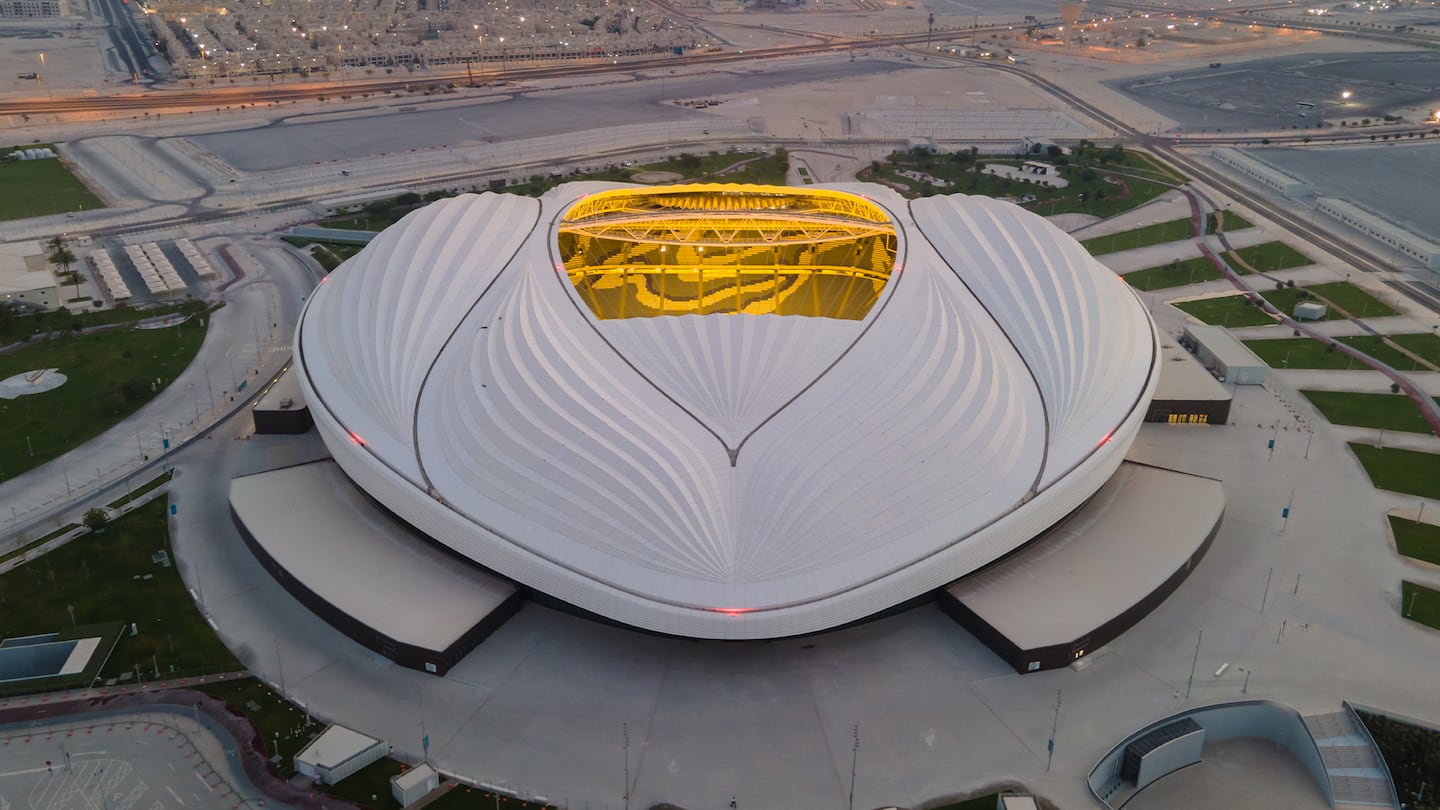
DOHA, Qatar — Virtually every big retail launch in Qatar has been planned around the FIFA World Cup kick-off on Nov. 20. Even the opening of the Qatari branch of Parisian department store Printemps was timed for this month’s tournament.
Though some fashion insiders have questioned football’s relevance to a 157-year-old luxury business, others are asking something more fundamental: why has the retailer chosen Doha over Dubai, the fashion capital of the fast-growing Middle East, for its first location outside France?
“I think that the planning of the World Cup makes Doha very visible,” said Thierry Prevost, general manager of Printemps Doha. “Our shareholders are also Qatari, maybe that plays a role.”
Prevost’s inclination to downplay the nationality of the owners of the department store group is understandable given his position, but ownership is almost certainly a key motivating factor.
ADVERTISEMENT
Qatar Holding acquired Printemps in 2013 through its Luxembourg-based firm Divine Investments, just a few years after snapping up London department store Harrods. Qatar Holding is the operating arm of the nation’s sovereign wealth fund Qatar Investment Authority (QIA), which is led by prominent members of the ruling Al Thani royal family.
Qatari involvement in the global luxury industry doesn’t end there. Mayhoola for Investments, parent company of Valentino, Balmain and Pal Zileri, is said to receive financing from the QIA, though these dealings are difficult to track due to the fund’s opaque nature.
Sheikha Moza bint Nasser al-Missned, mother of the current Emir of Qatar and a regional style icon who serves as honorary chair of Fashion Trust Arabia alongside her daughter Sheikha Al Mayassa, has been linked to Mayhoola even though it is managed by Egyptian businessman Rachid Mohamed Rachid.
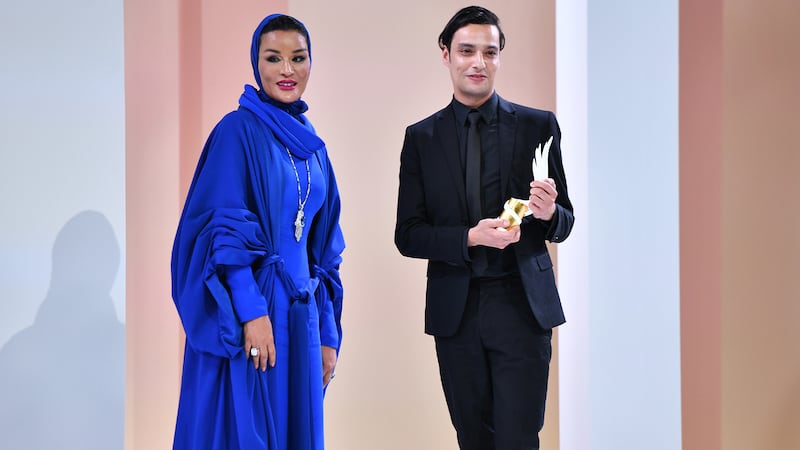
While many of Qatar’s luxury assets outside the country are dealt with discreetly by investors back in Doha, those like Printemps with an outpost inside the Gulf state can afford to be a bit more conspicuous.
Within its massive space at Doha Oasis, situated in a renovated historic area known by locals as Old Doha where many of the ruling families once lived, Printemps Doha is connected to Quest Theme Park and topped by Banyan Tree luxury apartments. One of the apartments will be transformed into a deluxe private client space for the department store, offering an exclusive venue for parties and events.
“There are nice department stores [in Doha] already, but what we are bringing is completely different,” Prevost said, referring to the use of the 40,000 square metre space set over three floors that will stock hundreds of luxury fashion, jewellery and beauty brands.
The overlap between World Cup football fans descending on the Qatari capital and luxury goods clients buying big ticket items at stores like Printemps Doha may not be immediately apparent to some. But any serious international tourism campaign linked to major sporting events ensures that other revenue-generating attractions are available for visitors to enjoy during their free time outside the games. And shopping is clearly an important part of that mix.
Ever since Qatar secured its bid for the World Cup 12 years ago, however, observers from around the world have questioned whether it is the right place for a global sporting event of this kind and whether the country will be ready — physically and culturally — to welcome the diversity of people who will come expecting certain freedoms and provisions in what remains a socially conservative state.
ADVERTISEMENT
While it may be a common stereotype, it’s unfair to say that tournament-goers won’t be interested in Qatar’s cultural offerings by way of its growing arts scene across Doha’s museums, M7 hub and the modern galleries at Fire Station.
However, some international football fans will certainly be less interested in those offerings and the wholesome family-friendly pursuits the country is highlighting such as kitesurfing resorts and leisure destinations like Doha Winter Wonderland. Many football fans who travel to World Cup events seek out other forms of entertainment such as clubs, bars and other nightlife, and due to its strict Islamic codes including restrictions on alcohol, Qatar has a dearth of those options available.
There is, of course, an argument that the lack of diverse entertainment facilities in Qatar makes retail facilities even more attractive to visitors with fewer available options at their disposal. But even as retail infrastructure has proliferated in the tiny Gulf state, accommodation capacity has remained an issue.
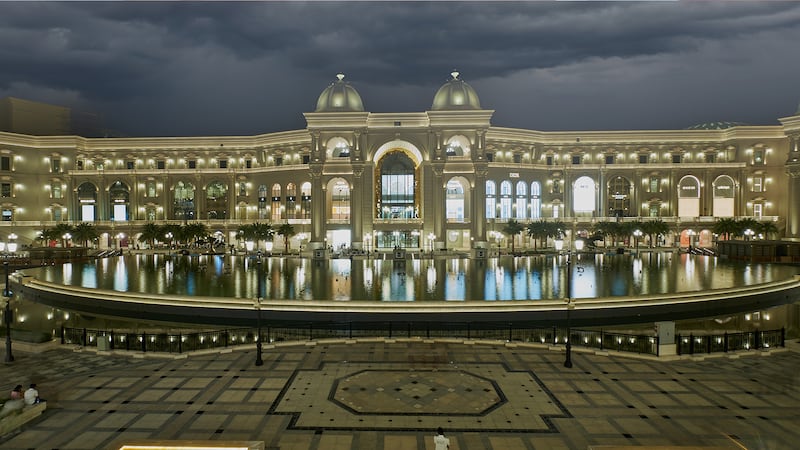
In July, Qatar Tourism announced a record-breaking 151,000 visitors in a single month, the largest number of arrivals since a 2017 blockade which saw other Middle Eastern countries such as Egypt, the United Arab Emirates, Saudi Arabia and Bahrain sever diplomatic and some economic ties with Qatar. This month, more than a year after the blockade was resolved, that record will be shattered when as many as 1.5 million visitors are expected to descend on Qatar for the World Cup.
Some experts suggest that Qatar may not have the capacity to handle the coming stampede of tourists, even with its portfolio of new real estate developments. One solution many guests have chosen is to stay in neighbouring countries like the UAE. Dubai has predicted that this will lead to a “mini Expo effect” as tourists flood that city, which has attractive nightlife and entertainment options built-in and where a quick one-hour flight to Doha is offered dozens of times a day through multiple airline carriers.
However, Qatar-based retailers aren’t just eyeing the short-term benefits of hosting football’s biggest tournament. With the rapid build-out of the nation’s infrastructure, transportation and hospitality developments, the event is part of a much grander plan called Vision 2030 which lays out the steps that Qatar will take to manage, develop and diversify its economy which is currently dominated by energy exports.
Although small in size, Qatar plays an outsized role on the world stage thanks largely to its immense supply of liquefied natural gas (LNG). In April 2022, shortly after the Russian invasion of Ukraine set off turbulence in global energy markets, the World Bank forecasted that Qatar’s GDP will grow by 4.9 percent in 2022 on the strength of its LNG revenues.
Though controversial for the heavy toll it took on migrant workers who risked life and limb to make it possible, Qatar’s World Cup infrastructure is nonetheless impressive. As the wealthiest Arab nation and one of the wealthiest in the world by per capita GDP, Qatar has poured over $229 billion into new metro lines, stadiums, hotels, entertainment facilities — and of course shopping centres.
ADVERTISEMENT
Since the tournament lasts only a month, and after its sizeable investments, Qatar needs to see ROI far into the future beyond 2030, which is why it’s betting big on retail infrastructure to continue attracting tourists long after the World Cup becomes a distant memory.
The port of entry for tourists — and therefore one of their first experiences with Qatar’s retail offerings — is the Hamad International Airport, which has grown to accommodate a sizable influx of travellers. Its expanded footprint includes over 10,000 square metres of retail space with Dior, Louis Vuitton and Hublot among the luxury brands that have invested in boutiques at Qatar Duty Free.
“With the World Cup, retail development and modernisation happening in Qatar, it was really the right time to change our penetration strategy in that market,” said Patrick Chalhoub, group president of Dubai-based Chalhoub Group, a joint venture partner for dozens of premium and luxury brands in Gulf Cooperation Council markets including Qatar.
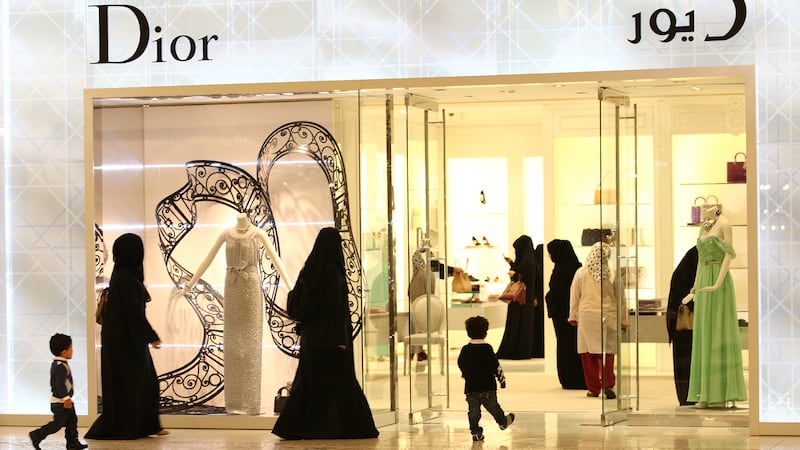
“Initially our strategy had been to focus on our Qatari customers. It’s true that the Qatari customer is not a huge number. Out of three million people in Qatar, around 500,000 are Qatari, and out of that, about 3,000 are the targeted [high-net worth] people,” Chalhoub said, adding that recent demographic shifts, however, have led the firm to identify resident expat executives and professionals as a secondary target.
But interestingly, Chalhoub joins the chorus of voices suggesting that the tournament could — in the short-term at least — dampen luxury spending among locals during this period.
“We actually don’t expect the wealthy Qataris to come shop during the World Cup, because [traffic] will make things more difficult,” he said, though he does expect travel retail to pick up in Qatar “after the World Cup, particularly from neighbouring countries like Saudi Arabia”.
“What makes us a little more confident [about longer term prospects beyond the World Cup] is the great job done at the airport, [where] they’ve created a sustainable business, no matter the time of year or how many visitors they get. The facility is excellent and traffic is also steady,” Chalhoub added.
Despite Qatar’s vast wealth and rapidly growing economy, there were relatively few luxury shopping destinations in the country a decade ago, save for the likes of Villagio Mall built in 2006 by Abdul Aziz Mohammed Al-Rabban’s Business Trading Company.
Investors have since raced to create more retail infrastructure, motivated in large part by government incentives and pressure after Qatar secured the World Cup. In 2016, the Mall of Qatar opened, which is managed by Power International Holding and is in Al Rayyan Village where one of the World Cup’s host stadiums is located.
Next, Doha Festival City opened in 2017 and is operated by Emirati conglomerate Al Futtaim Group. As opposed to its luxury counterparts, the mall features mostly mass market offerings. It was the largest retail destination in Qatar until Place Vendôme opened its 1.1 million square metre mixed-use space in April 2022, which includes 230,000 square metres of luxury retail. While it may have a French namesake, Place Vendôme in Doha has no relationship to the historic Paris shopping area.
Like other Qatari retail developments, Place Vendôme has had teething issues. Not only did it launch roughly five years past initial projections, but when its doors finally did open it was barely occupied. Filling the mall has been a gradual process.
“Traffic is below our expectation, but the mall is not at ‘cruise speed’ yet,” said Chalhoub, whose company is the joint venture partner for dozens of the brands at Place Vendôme such as Louis Vuitton, Dior and Fendi. “With the developer, we’ve had the discussion that we will not ramp up our investments yet. The strong launch of [Place Vendôme] will be in February 2023, when the units will be 95 percent opened,” Chalhoub said.
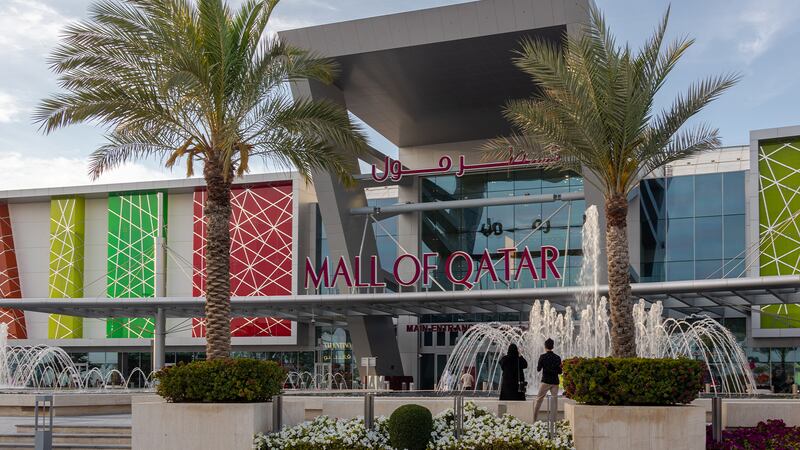
One reason it has been underperforming, say some retail leaders in the region, is the mall’s shortage of food and beverage options.
“F&B drives business,” explains Kevin Pender, general manager of Galeries Lafayette Doha and the fashion division of the department store’s local partner Ali Bin Ali Holding, which includes its shopping centre 21 High Street in Katara Cultural Village. “At 21 High Street, for example, 80 percent of our clients are Qatari and the average repeat customer comes in three times a week. We [attribute] that in part to our three restaurants, which significantly increase dwell time.”
Dubai-based Chalhoub Group is arguably the most prominent partner for premium and luxury brands in Qatar but Adel Ali Bin Ali’s Doha-based Ali Bin Ali Holding partners with brands like Cartier and Van Cleef & Arpels while another local firm, Wissam Al Mana’s Al Mana Group, stewards brands like Hermès and has partnered with Harvey Nichols to open a Doha outpost for the UK department store.
While some of these luxury players have been in “wait-and-see mode” when it comes to planning for World Cup business opportunities, others say they went all-in.
“I think you have two choices: either… embrace it and maximise the opportunity. Or dismiss the opportunity,” says Pender of Galeries Lafayette Doha. “We have certainly embraced it. We’re expecting huge footfall, and we think a big majority will be the right type… [Besides] in Galeries Lafayette, we have [some] very accessible brands [alongside our luxury brands].”
The World Cup will likely present bigger immediate opportunities for mass market players in the Qatar market like UAE-based retail company Azadea, the partner for high street brands like Zara, Mohammed Alshaya’s Kuwait-based Alshaya which operates H&M and Muji in the country and local partners of value retailers like Matalan and others that are in more affordable Doha shopping centres such as the Gulf Mall, Mirqab and Landmark.
A study by RedSeer Strategy Consultants predicts that the World Cup will “drive growth and help achieve a tourist inflow of six million by 2030.” That’s more than double the current tourist inflow of 2.5 million annually. To accommodate future growth, Qatar has planned “an additional one million square metres of retail space… in the coming years,” according to a recent report by Lloyd’s Bank.
However, some leading retailers in the region have expressed concern that the tiny nation could have overextended itself by creating a supercharged retail landscape that may never see the number of shoppers its leaders hope to attract from overseas.
It’s an ironic development given that Qatar was once an undersupplied market that saw many of its local HNWIs travel to Europe and neighbouring cities like Dubai to shop for luxury goods. Chalhoub acknowledged this saying, “we went from a phase where Qatar was underwritten to sufficiently written. Now we have the worry that we have a situation where it could be overwritten. We have a long way to go to understand if the plan to bring tourists will be sufficient to prevent oversupply.”
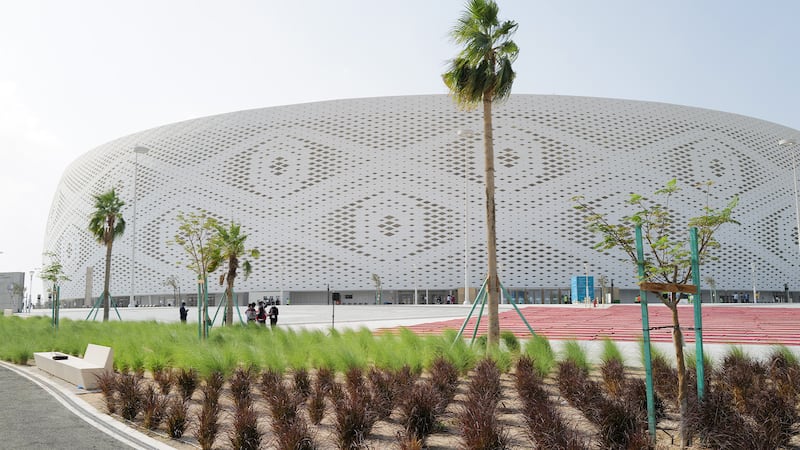
Chalhoub emphasises the fact that Qatar’s luxury market is built on several thousand locals who, according to Chalhoub Group’s “Personal Luxury 2021″ report, drove a 10 percent rebound in the Qatari luxury market in 2021 after the first year of the pandemic. But in 2022, these same locals travelled more abroad and for longer periods of time than ever before, particularly to Europe, where currency fluctuations made it more attractive to buy luxury goods there.
Pender takes a different view. “Yes, there is a risk for oversupply [of retail in Qatar],” he says, “But every time the competition gets bigger, you have to get better... You have to make yourself the obvious choice for the clients… [so] right now, we hope that the World Cup helps [Galeries Lafayette] gain more market share in the country, and a lot of exposure. We’re ready to welcome the world.”
While there is certainly cause for some optimism, Qatar’s fashion retail market does face an uncertain future. There are myriad factors that prime it for success, but just as many stumbling blocks.
The World Cup could be the trigger needed to boost inbound tourism flows that welcome more shoppers in from the Middle East, the wider Muslim world, Europe, Asia and further afield. It might also help make the country appear more attractive to companies and expats exploring opportunities to relocate to the region despite calls by campaigners like Amnesty International for Qatar to make more progress on human rights issues. But it might not.
A lot depends on how well the host nation handles the World Cup logistics, how it welcomes attendees, what visitors remember from the experiences they had and future government policies and reforms.
It would be an overstatement to consider the month-long tournament as a “make or break” moment. Retail revenues taken during the World Cup period will serve as a useful baseline for future comparisons, but they are necessarily indicative of the outlook for the longer-term retail market.
Armed with huge financial resources, ambitions to match and an “if we build it, they will come” mentality, the odds are in Qatar’s favour to continue punching above its weight in terms of fashion retail. With Dubai so close, however, just how far above its weight it can strike remains to be seen.
Editor’s note: This article was updated on 17 November 2022. A previous version of this article misstated that Sheikha Moza bint Nasser al-Missned, mother of the current Emir of Qatar and a regional style icon, is heavily involved in Mayhoola. She is not.
Local streetwear brands, festivals and stores selling major global labels remain relatively small but the country’s community of hypebeasts and sneakerheads is growing fast.
This week’s round-up of global markets fashion business news also features Senegalese investors, an Indian menswear giant and workers’ rights in Myanmar.
Though e-commerce reshaped retailing in the US and Europe even before the pandemic, a confluence of economic, financial and logistical circumstances kept the South American nation insulated from the trend until later.
This week’s round-up of global markets fashion business news also features Korean shopping app Ably, Kenya’s second-hand clothing trade and the EU’s bid to curb forced labour in Chinese cotton.